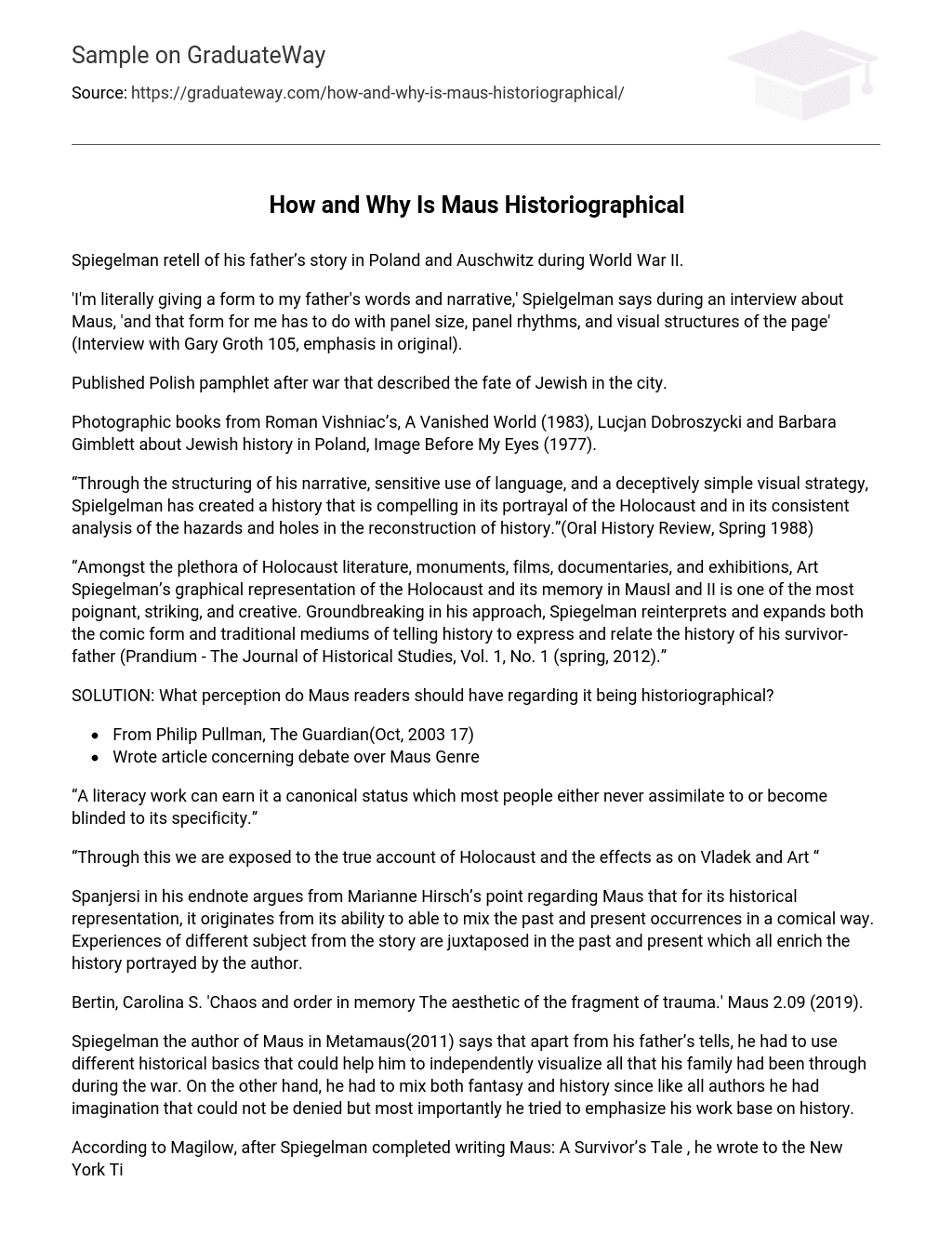Spiegelman retell of his father’s story in Poland and Auschwitz during World War II.
‘I’m literally giving a form to my father’s words and narrative,’ Spielgelman says during an interview about Maus, ‘and that form for me has to do with panel size, panel rhythms, and visual structures of the page’ (Interview with Gary Groth 105, emphasis in original).
Published Polish pamphlet after war that described the fate of Jewish in the city.
Photographic books from Roman Vishniac’s, A Vanished World (1983), Lucjan Dobroszycki and Barbara Gimblett about Jewish history in Poland, Image Before My Eyes (1977).
“Through the structuring of his narrative, sensitive use of language, and a deceptively simple visual strategy, Spielgelman has created a history that is compelling in its portrayal of the Holocaust and in its consistent analysis of the hazards and holes in the reconstruction of history.”(Oral History Review, Spring 1988)
“Amongst the plethora of Holocaust literature, monuments, films, documentaries, and exhibitions, Art Spiegelman’s graphical representation of the Holocaust and its memory in MausI and II is one of the most poignant, striking, and creative. Groundbreaking in his approach, Spiegelman reinterprets and expands both the comic form and traditional mediums of telling history to express and relate the history of his survivor-father (Prandium – The Journal of Historical Studies, Vol. 1, No. 1 (spring, 2012).”
SOLUTION: What perception do Maus readers should have regarding it being historiographical?
- From Philip Pullman, The Guardian(Oct, 2003 17)
- Wrote article concerning debate over Maus Genre
“A literacy work can earn it a canonical status which most people either never assimilate to or become blinded to its specificity.”
“Through this we are exposed to the true account of Holocaust and the effects as on Vladek and Art “
Spanjersi in his endnote argues from Marianne Hirsch’s point regarding Maus that for its historical representation, it originates from its ability to able to mix the past and present occurrences in a comical way. Experiences of different subject from the story are juxtaposed in the past and present which all enrich the history portrayed by the author.
Bertin, Carolina S. ‘Chaos and order in memory The aesthetic of the fragment of trauma.’ Maus 2.09 (2019).
Spiegelman the author of Maus in Metamaus(2011) says that apart from his father’s tells, he had to use different historical basics that could help him to independently visualize all that his family had been through during the war. On the other hand, he had to mix both fantasy and history since like all authors he had imagination that could not be denied but most importantly he tried to emphasize his work base on history.
According to Magilow, after Spiegelman completed writing Maus: A Survivor’s Tale , he wrote to the New York Times Book Review editor. The editor classified the book as a fiction and included it on its best seller list. The author objected to the book being termed as a fiction and asked the Times to place it in non-fiction category.





